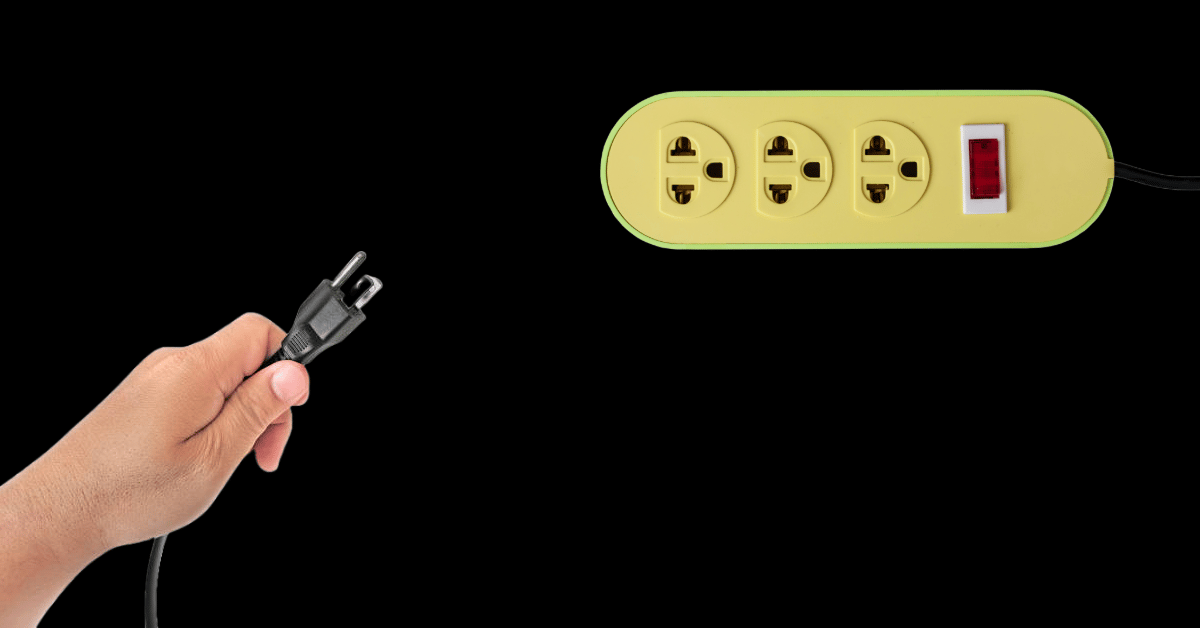
The campaign bus with the candidate’s larger-than-life face plastered across the side.
The overly dramatic black-and-white tv commercials attacking their opponent and scaring you, all at once. Once upon a time, political races revolved around catchy slogans, schmoozy handshakes, with a side of smear campaigns. Now, they’ve moved onto social media, and the candidate that wins the internet wins the campaign. Case in point? Zohran Mamdani, who’s about to become the next mayor of New York.
- Charlotte Ellis, Editor ♡
PRESENTED BY ONSHOUT
Gifting doesn't have to be hard
We've all been there—unwrapped another pair of socks, scented candle, or generic mug—and forced a polite smile.
But what if there was a way to not just get what you'd really like for the holidays, but make buying gifts for others more meaningful, too?
OnShout is a new social wishlist platform that takes the guesswork out of gifting.
Now, it's easy to:
📋Build a wishlist in minutes
🤳🏼Share what you want with friends & family
🎁Contribute to gifts your loved ones actually want, too
No more "thanks, I love it" while inwardly sighing. Gifting just became simple (finally) 👇
WHAT’S HAPPENING IN MARKETING TODAY?
Chalamet’s Vogue cover is yikes, France will suspend Shein & Meta makes billions off scam ads

Yes, Timothee Chalamet’s Vogue cover really was that bad.
You saw it. I saw it. We all recoiled in a collective “wtf is this." The cover featured the internet’s favourite heartthrob, dressed head to toe in Celine, stood atop a swirling planet, wispy nebulas and stars scattered amongst the background.
This was supposedly Anna Wintour’s last cover, and dear oh dear, it’s proved divisive. Partially because Chalamet, famous for his gorg locks, is bald. Mostly because it's reminiscent of the greenscreen heavy Shark Boy and Lava Girl era in the 2000s. Maybe with slightly better graphics. Is it a sign galaxy print is coming back? Is it time to pull out my leggings from 2012? Just kidding, I burned them in the deepest pits of hell.
France moves to suspend Shein over sex dolls as debut store opens in Paris.
Not just sex dolls. Childlike sex dolls. Yeah, straight to jail. The French government has said it will suspend the fast-fashion retailer after discovering the dolls on the website. This announcement came just as Shein opened its first ever brick and mortar store in Paris on Wednesday, at which shoppers had been queuing outside for hours before the doors opened. They were accompanied by protesters, politicians and a heavy police presence. Around the corner from the queue stood Emmanuel Grégoire, a former deputy Paris mayor and now a Socialist MP. He said the issue was bigger than shopping and was an “existential threat” to society.
“What is at stake this morning with this opening goes far beyond a commercial controversy; it is a choice of society and a battle for the future we want to pass on to our children,” he said. “On the one hand, the empire of disposability and dehumanisation; on the other, a world based on respect, knowhow, and responsibility. We choose the latter.”
Meta's earning billions from scam ads.
Y’all, I’m sick of ts. Every week it’s something new with them. Something new and something AWFUL, might I add. According to a new report from Reuters, Meta has estimated that 10% of its overall annual revenue (around $16B) comes from SCAM ADVERTISING or promotions for banned goods. Of course, we can’t expect Meta to respond to every report it receives. But the documents show that the company is both aware and actively ignoring the issue.
This is notttt a good report for Meta, who has refuted the claims, saying that these internal documents were “not intended for public consumption.” I wonder why!
-Sophie Randell, Writer
DEEP DIVE
How Zohran Mamdani just redefined political campaigning

No more shaking hands and kissing babies.
New York City has a new mayor, and he won by being online - properly online.
The kind of online that knows when to meme and when to log off. Zohran Mamdani's campaign is more than a victory for progressive politics; it’s been a masterclass in how digital fluency, cultural awareness, and actual authenticity can move mountains.
When a Muslim man is elected as Mayor for the first time in history, it emphasises the sheer power that social media wields in an age where attention is the most valuable political currency.
From the jump, Mamdani’s campaign completely outclassed his opponents.
While other candidates were still posting grainy podium shots with “#VoteForChange” captions, his team was dropping cinematic, high-production videos that felt like a reimagined version of Harold and Kumar by a24. They were emotional, stylish, comedic and perfectly timed for the algorithm. This wasn’t your average political comms that are practically begging and pleading to be shared—it deserved to be shared.
But beyond aesthetics, the content was smart. Mamdani’s videos didn’t preach policy from a podium; they told stories of real New Yorkers. The subway driver. The street vendor. The renter hanging on by a thread. The result was a campaign that felt genuinely community-driven, multilingual, and inclusive, and not in the checkbox way politicians usually use those words.
It was the first campaign in a long time that looked and sounded like the city it aimed to represent.
Mamdani’s team understood something most political marketers still don’t: online audiences can taste inauthenticity faster than you can say “paid partnership.”
Every awkward selfie-video or “how do you do, fellow kids” TikTok from a politician is proof of that. Instead of trying to mimic youth culture, Mamdani leaned into what actually made him human: his background, his humour, his principles, his honesty. Then he trusted that people would connect with it.
He didn’t overexplain his progressivism; he embodied it. He didn’t pretend to “get” memes; his supporters made them for him. And he didn’t try to out-AI his competitors with slick, uncanny-valley campaign content.
He let the fun swirl around him, staying composed with the utmost professionalism, while the internet did what it does best: remix, reframe, and rally.
That restraint, the choice not to chase every trend or distastefully attack his opponents, might’ve been the most strategic move of all.
In a time when many political campaigns are turning into chaotic content farms powered by interns and ChatGPT prompts, Mamdani’s feed felt considered. It was bold, but not performative. Informative, but not condescending. Viral, but not at all cringe.
Here’s the bigger shift Mamdani represents: politics is now a media brand game.
Yes, we have reached that era.
The one where every candidate is a content creator, every campaign is a cultural product, and every voter is both the audience and the algorithm.
In that context, Mamdani’s win is symbolic of this new era, where digital storytelling defines legitimacy. His campaign showed that good policy isn’t enough; it has to be seen, shared, and basically memed into existence. The old model of big donors, TV ads, door knocking still matters. But it can’t compete with the power of a narrative that lives natively online.
Of course, there’s a danger here. When attention becomes the ultimate political goal, governance risks turning into performance. Viral moments can win elections, but they don’t build infrastructure or balance budgets. Mamdani might be the rare case where a candidate’s charisma and competence align. But the broader trend of politics as influencer culture is worth watching with cautious optimism…
If nothing else, Mamdani’s win tells us that voters are tired of being talked at.
We want to be in on the conversation, to feel like politics isn’t just happening somewhere above us, but with us. It’s about us after all.
Social media, for all its chaos, has flattened that relationship. It’s turned politicians into public figures who have to show up online as real people, not just press releases in suits that feel one million miles away.
It’s also exposed who can handle that pressure. The internet is a brutal equaliser. You can’t fake charisma, empathy, or cultural literacy. And Mamdani’s success was never about dominating the discourse, but instead, understanding it.
There’s a marketing takeaway in here too (of course.)
Mamdani’s campaign proves what the best communicators already know:
Be where your audience is, not where it’s comfortable. His team didn’t treat social as an afterthought. They built for it.
Authenticity isn’t a tactic; it’s the whole damn strategy. If you fake it, the algorithm (and the audience) will most likely know.
Content has to live in culture. People share things that reflect their identity, not your agenda.
Substance still matters. All the good vibes in the world can’t replace credible ideas or consistent action.
Zohran Mamdani may have just cracked the code for politics in the attention age.
His campaign was no fluke. His campaign reflects what communication looks like when it’s designed for the world we actually live in: fast, fragmented, and fiercely online.
-Sophie Randell, Writer
TREND PLUG
“Yes!! Wowow, perfect, lovelovelovelove!!!”

This one’s an easy win for when you want to show complete and utter enthusiasm for something, whether it's a product, visual, campaign, or even a new office setup.
The audio comes from TikTok user @edithgarciaromo, where the voiceover literally goes “Yes!! Wowow, perfect, lovelovelovelove!!!”. It originally played over a cute pedicure video, but the energy? Immaculate.
It’s low-effort, high-energy, and extremely versatile, perfect for showing something off that you’re proud of.
Some of my favourite examples include:
Truly varied stuff!
How you can jump on this trend:
Use the sound and pair it with a short video or clip showing a product, space, design, or moment that sparks joy. This can be anything you’re genuinely proud of or excited about. That’s it!
A few ideas to get you started:
A video of that satisfying moment when brand colours, typography, and imagery align just right
The team celebrating with bubble tea after a long campaign pitch
A perfectly timed product shot in golden hour light
-Nico Mendoza, Intern
FOR THE GROUP CHAT
😲WTF: Tattoo shivers
✨Daily inspo: The real goal
😊Soooo satisfying: Rug Deep Clean
🍝What you should make for dinner tonight: Beef and Cheese Empanadas
ASK THE EDITOR

I work for a bilingual company in Canada. Due to provincial laws, we have to use both languages on every post, or we can use French only. How can we take a very anglophone trend and re-do it in French without losing its meaning? - M
Hey M!
Rather than thinking of a trend in terms of what language it's in, think about it first as a concept. So when you see a trend go off in English, break down what makes it work. Is it the visuals? The timing? A cultural reference? Once you understand the mechanism, you can recreate it in French with the same feeling, not necessarily the same words.
As you know, a literal translation often kills the humour or nuance, so it’s better to reframe the idea in a way that feels native to both audiences. In other words, think adaptation, not translation. So when you hop on a trend, remember that French Canadian culture has its own trends, jokes, and slang too. Tapping into that culture directly can often perform better than trying to retrofit an anglophone one.
- Charlotte Ellis, Editor ♡
Not going viral yet?
We get it. Creating content that does numbers is harder than it looks. But doing those big numbers is the fastest way to grow your brand. So if you’re tired of throwing sh*t at the wall and seeing what sticks, you’re in luck. Because making our clients go viral is kinda what we do every single day.


